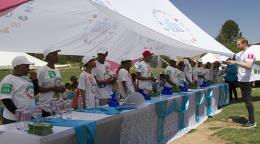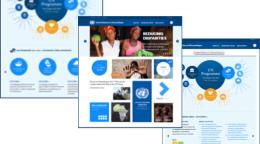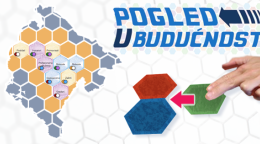Action 2030 Blog
Shaking up our work in Armenia
Written by
Bradley Busetto
|
25 February 2015
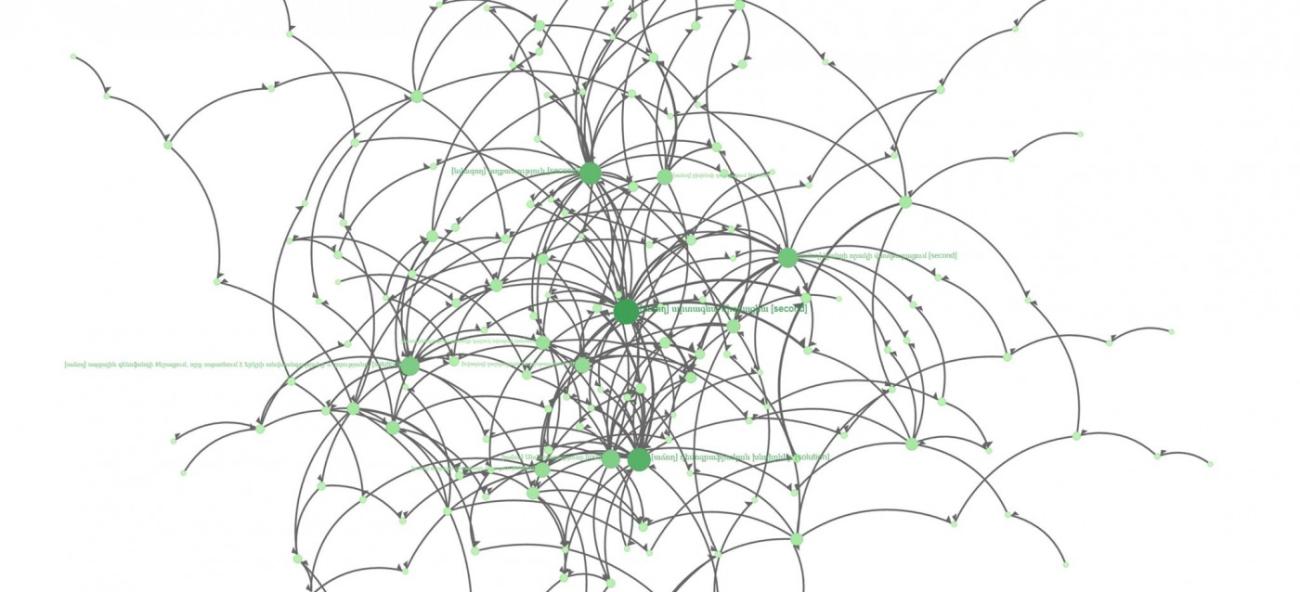
UN Development System
Development issues are more complex and interconnected than ever before. This is pushing us to rethink the way the development community walks, talks, moves and shakes. Increasingly, the defining backdrop upon which our policies are crafted is that of ‘future planning’.
The UN in Armenia is engaged in its UNDAF strategic planning process. This seemed like a good time to shake-up our work through foresight, trying to gauge its potential in shaping the UN’s strategy in Armenia and in supporting the design of future development programmes.
Why did we do it?
Our ambition was to create a sample map of the future of Armenia as imagined by Armenians. Using a digitalized foresight methodology called Futurescaper, we created an online questionnaire asking participants, “What are the most important trends in Armenia today?” and “How might these trends evolve in five years, and again in 20 years?”.
We then asked how those trends might interact with the trends that other participants had identified. We also asked users what should be done to manage these trends and who should be responsible for this.
Planning for the next five-year cycle of the UN’s engagement with Armenia presents an opportunity for scenario planning and, most importantly, including the voice of citizens. If scenarios of the future are decided by those at the top - by your policymakers, technocrats, development practitioners, etc. - then inevitably development policies will be built to reflect only those futures.
In contrast, crowdsourcing of information from large groups of people can help design development activities for citizens with citizens. By placing the citizen in the driver’s seat, we can explore more inclusive scenarios, composed of current trends and their short- and long-term impacts.
Putting the citizen in the driver’s seat
Future planning requires a framework that maps what the future is likely to look like. This is what foresight offers: a prediction of the future based on the ebb and flow of today’s trends. It is a bridge between present (trends) and future (planning). A panacea it is not, but the utility of this methodology is nonetheless being taken increasingly seriously and is being tested both inside and outside of the UN.
With the help of UNDP Armenia’s Kolba Innovation Lab, we sent out the survey in three phases, each one building upon the last. Phase one gave respondents open space to define the trends that they thought to be important. Phase two gave a set list to choose from, compiled on the basis of the answers from the first phase.
The online survey was sent out to 26,747 people, including UN agencies, government, civil society, private sector and students. About 1,100 people started the survey and only 74 completed it.
The wide gap between survey starts and completions has led us to a few conclusions on how better to crowdsource foresight exercises, such as offering incentives and reward mechanisms to the user in order to harness fully collective intelligence. Most importantly, you need to make a choice between keeping the survey simple or targeting experts, thereby sacrificing inclusiveness.
What did we discover?
We’ve pulled out three stories: economic, social and political, which represent only the combined ideas and opinions of a random selection of Armenians who completed the survey, including government officials, business owners and students.
The Futurescaper data did not paint a pretty picture of the future of Armenia: respondents identified mass outmigration as the likely future scenario, due to a build-up of a mixture of poor economic performance, corruption, limited opportunities for growth, and the inability of government to do anything about it.
These results are not paradigm-shaking. They’re not meant to be. Foresight is intended only to complement existing development initiatives, providing a more grounded way of thinking about the future, and using crowdsourcing platforms like Futurescaper we can make development projects more inclusive to all areas of society, occasionally uncovering areas that need more work, or potential blind-spots lying around the corner.
Talking about troubling trends and potential solutions
As part of the survey, respondents were also asked to think of solutions. Recommendations included the creation of new jobs, specifically for young Armenian professionals to pursue their careers in their home country, helping small businesses to survive, fighting against corruption, engaging citizens in designing the regulations and encouraging dialogue between citizens and the Government.
Interestingly, when asked who was responsible for solving these issues, the overwhelming response was that it was the government’s responsibility.
This type of crowdsourced consultation on trends and their solutions might help in your work, and it might guide the UN Country Teams in strategic planning and validate their tactics of engagement. It is important to acknowledge, however, that crowdsourcing is just one piece in the UNDAF jigsaw puzzle - along with needs and priorities in national development strategies and plans, and UN comparative advantages and areas of expertise.
Ultimately, Futurescaper has enabled greater debate, and greater resolution on the perceptions of people. And although a pilot exercise such as this came with a steep learning curve, it was one that will be informing foresight exercises in other UN offices across the world.
The UN in Armenia is engaged in its UNDAF strategic planning process. This seemed like a good time to shake-up our work through foresight, trying to gauge its potential in shaping the UN’s strategy in Armenia and in supporting the design of future development programmes.
Why did we do it?
Our ambition was to create a sample map of the future of Armenia as imagined by Armenians. Using a digitalized foresight methodology called Futurescaper, we created an online questionnaire asking participants, “What are the most important trends in Armenia today?” and “How might these trends evolve in five years, and again in 20 years?”.
We then asked how those trends might interact with the trends that other participants had identified. We also asked users what should be done to manage these trends and who should be responsible for this.
Planning for the next five-year cycle of the UN’s engagement with Armenia presents an opportunity for scenario planning and, most importantly, including the voice of citizens. If scenarios of the future are decided by those at the top - by your policymakers, technocrats, development practitioners, etc. - then inevitably development policies will be built to reflect only those futures.
In contrast, crowdsourcing of information from large groups of people can help design development activities for citizens with citizens. By placing the citizen in the driver’s seat, we can explore more inclusive scenarios, composed of current trends and their short- and long-term impacts.
Putting the citizen in the driver’s seat
Future planning requires a framework that maps what the future is likely to look like. This is what foresight offers: a prediction of the future based on the ebb and flow of today’s trends. It is a bridge between present (trends) and future (planning). A panacea it is not, but the utility of this methodology is nonetheless being taken increasingly seriously and is being tested both inside and outside of the UN.
With the help of UNDP Armenia’s Kolba Innovation Lab, we sent out the survey in three phases, each one building upon the last. Phase one gave respondents open space to define the trends that they thought to be important. Phase two gave a set list to choose from, compiled on the basis of the answers from the first phase.
The online survey was sent out to 26,747 people, including UN agencies, government, civil society, private sector and students. About 1,100 people started the survey and only 74 completed it.
The wide gap between survey starts and completions has led us to a few conclusions on how better to crowdsource foresight exercises, such as offering incentives and reward mechanisms to the user in order to harness fully collective intelligence. Most importantly, you need to make a choice between keeping the survey simple or targeting experts, thereby sacrificing inclusiveness.
What did we discover?
We’ve pulled out three stories: economic, social and political, which represent only the combined ideas and opinions of a random selection of Armenians who completed the survey, including government officials, business owners and students.
The Futurescaper data did not paint a pretty picture of the future of Armenia: respondents identified mass outmigration as the likely future scenario, due to a build-up of a mixture of poor economic performance, corruption, limited opportunities for growth, and the inability of government to do anything about it.
These results are not paradigm-shaking. They’re not meant to be. Foresight is intended only to complement existing development initiatives, providing a more grounded way of thinking about the future, and using crowdsourcing platforms like Futurescaper we can make development projects more inclusive to all areas of society, occasionally uncovering areas that need more work, or potential blind-spots lying around the corner.
Talking about troubling trends and potential solutions
As part of the survey, respondents were also asked to think of solutions. Recommendations included the creation of new jobs, specifically for young Armenian professionals to pursue their careers in their home country, helping small businesses to survive, fighting against corruption, engaging citizens in designing the regulations and encouraging dialogue between citizens and the Government.
Interestingly, when asked who was responsible for solving these issues, the overwhelming response was that it was the government’s responsibility.
This type of crowdsourced consultation on trends and their solutions might help in your work, and it might guide the UN Country Teams in strategic planning and validate their tactics of engagement. It is important to acknowledge, however, that crowdsourcing is just one piece in the UNDAF jigsaw puzzle - along with needs and priorities in national development strategies and plans, and UN comparative advantages and areas of expertise.
Ultimately, Futurescaper has enabled greater debate, and greater resolution on the perceptions of people. And although a pilot exercise such as this came with a steep learning curve, it was one that will be informing foresight exercises in other UN offices across the world.

Action 2030 Blog
23 February 2017

Action 2030 Blog
28 September 2016

Action 2030 Blog
17 August 2016

Action 2030 Blog
10 August 2016

Action 2030 Blog
03 August 2016

Action 2030 Blog
28 July 2016

Action 2030 Blog
12 May 2016
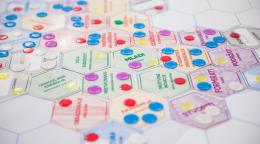
Action 2030 Blog
20 October 2015
1 / 12
1 / 12

Action 2030 Blog
23 February 2017

Action 2030 Blog
28 September 2016

Action 2030 Blog
17 August 2016

Action 2030 Blog
10 August 2016

Action 2030 Blog
03 August 2016

Action 2030 Blog
28 July 2016

Action 2030 Blog
12 May 2016

Action 2030 Blog
20 October 2015
1 / 12
1 / 12


